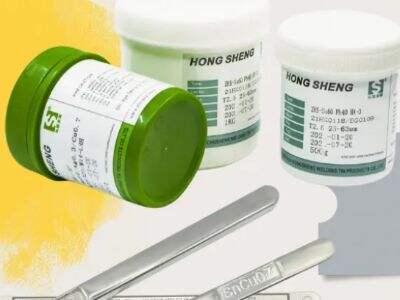One of the most amazing experiences you can have is if you have seen inside a computer or any gadget that has multiple parts and wires. They are little things called circuit boards and they play a vital role in getting things to work! Solder Paste connects these tiny pieces. Solder paste is essential as it makes the components adhere together to conduct electricity, well. But which one to select then, for the solder paste? In this article, we are going to see how can choose an auspicious solder paste selection for assembling different types of circuit boards! Hong Sheng is here to help you.
What is Solder Paste?

What in the world is solder paste Imperial Wessex Solder Paste and solder bar is a mixture of some ingredients that help to be more effective at its job. Solder is a metal and this is an important component of solder paste. When things get really hot it turns to liquid and under pressure, that becomes a permanent bond holding the little bits together tightly. However, solder paste is more than just the solder itself. The powder is metallic in nature, and the flux is an exotic mix of metals. Flux is essential for this because it cleans the surfaces of the parts we are trying to join. This bond is stronger when the surfaces are cleaner. Now that you know what the solder paste is composed of, we will explain to you how to choose the type of material for your circuit board.
How to Select the right Solder Paste for your PCB
The types of parts you will use are the first thing to consider when selecting solder paste for your circuit board. Some parts on your PCB may require different solder pastes ingredients for the best performance. You must also take into account the size or pitch of your parts and how close they are to one another on the board. This informs you which solder paste thickness to use. If the parts are super small and very close to each other, you will need a thinner solder paste. If it is, then a thicker paste will also be needed as it wont settle well unless all of those mini-buttons are equally spaced.
Why Thickness Matters
Selecting the right size of the solder paste and solder wire is crucial in a good connection. Right thickness: easy handling, probably works very well Wrong thickness: might suck. If the paste is too thick, for example, it will not flow between parts and bond them together. This can ultimately cause bad connections. If the paste is too wet then it will spread out far too much and give you a spillover rather than connect your parts. Which is why it is critical that you correctly pair the thickness of the solder paste with the components on your printed circuit board. Or better yet, seek the guidance of a professional or refer to the manufacturer's instructions for the parts in use.
Solder Paste and the Flux it Plays
Flux is another important component of solder paste, and it is very essential for the same. Flux is required because it will clean the parts and also will get solder to stick more easily. At the risk of stating the obvious (padding my word count more like); not all flux is created equal and can have a significant impact on what your solder paste gets up to whilst you're not looking! Certain flux is excellent at cleaning up your parts, prepping them for bonding in that the oxidation or general dirt has been removed. There are other types of flux that might be better for high-temperature applications. In other words, you need to know what kind of flux you require for the project that entails your circuit board.
Testing Your Solder Paste
After repeating the above process you selected a solder paste, checking it is functioning as per your expectation is must. Method 1: there are a couple of ways to test it out Another is to perform a “print test. Test-2 Begin this test by placing a small quantity of solder paste onto a circuit board surface and just observe how it spreads out. You can perform a "reflow test", where you apply heat to the solder paste and then inspect it to make sure that the parts are held together as properly. There are also some tools (called microscopes) that can help you to check how good the paste is working. If you test and evaluate your solder paste right now, at the board level, you are ensuring that your circuit board assembly will be a success.
 EN
EN
 AR
AR
 FR
FR
 DE
DE
 RU
RU
 VI
VI
 TH
TH
 TR
TR
 MS
MS
 BE
BE

